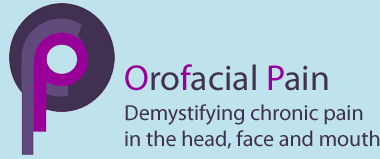Neuropathic pain: Post Herpetic neuralgia
https://www.nhs.uk/conditions/post-herpetic-neuralgia/ Around 20% of people with shingles will get post-herpetic neuralgia. People age 50 and over are particularly at risk. Many people with post-herpetic neuralgia make a full recovery within a year. But symptoms occasionally last for several years or may be permanent.
Advice from the National Institute of clinical excellence includes;
- Post-herpetic neuralgia occurs when the pain associated with shingles becomes chronic.
- Symptoms may include constant or intermittent stabbing or burning pain, allodynia (pain induced by a non-painful stimulus), hyperalgesia (severe pain from a mildly painful stimulus), and intense itching.
- The risk of post-herpetic neuralgia increases with age, presence and severity of prodromal pain, and severity of acute shingles pain.
- Symptoms can resolve after a few months or may persist for longer. Interventions may not completely resolve the pain, but may reduce it. Initial treatment with paracetamol should be offered, either alone or in combination with codeine. Drugs used to treat neuropathic pain may also be prescribed.
- A person with post-herpetic neuralgia should be advised to:
- Wear loose clothing or cotton fabrics, as these will usually cause the least irritation.
- Consider protecting sensitive areas by applying a protective layer (such as cling film or a plastic wound dressing).
- Consider frequent application of cold packs (unless allodynia is triggered by cold).
- Referral to a specialist pain clinic or a relevant clinical speciality (such as neurology) is advised if any of the following apply:
- The person has severe pain.
- Their pain significantly limits their daily activities and participation.
- Their underlying health condition has deteriorated.
A recent review (Hadley GR, Gayle JA, Ripoll J, Jones MR, Argoff CE, Kaye RJ, Kaye AD. Post-herpetic Neuralgia: a Review. Curr Pain Headache Rep. 2016 Mar;20(3):17. doi: 10.1007/s11916-016-0548-x. Erratum in: Curr Pain Headache Rep. 2016 Apr;20(4):28. PMID: 26879875.) Highlights the pharmacological treatment of PHN may include a variety of medications including alpha-2 delta ligands (gabapentin and pregabalin), other anticonvulsants (carbamazepine), tricyclic antidepressants (amitriptyline, nortriptyline, doxepin), topical analgesics (5 % lidocaine patch, capsaicin) tramadol, or other opioids.
The considerable side effect profiles of the commonly used oral medications often limit their practical use, and a combination of both topical and systemic agents may be required for optimal outcomes. Physicians and other treatment providers must tailor treatment based on the response of individual patients.

